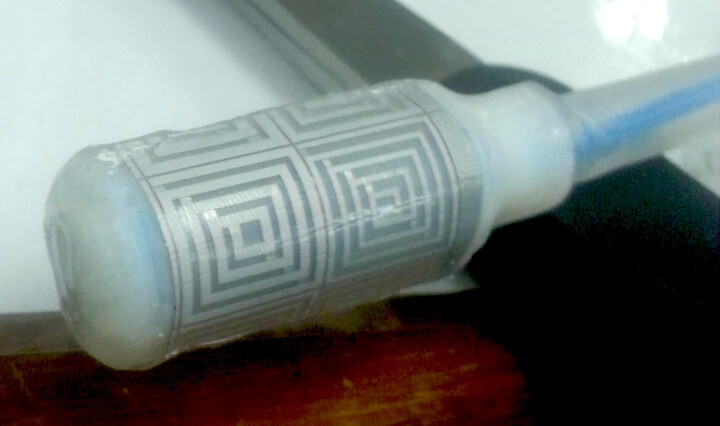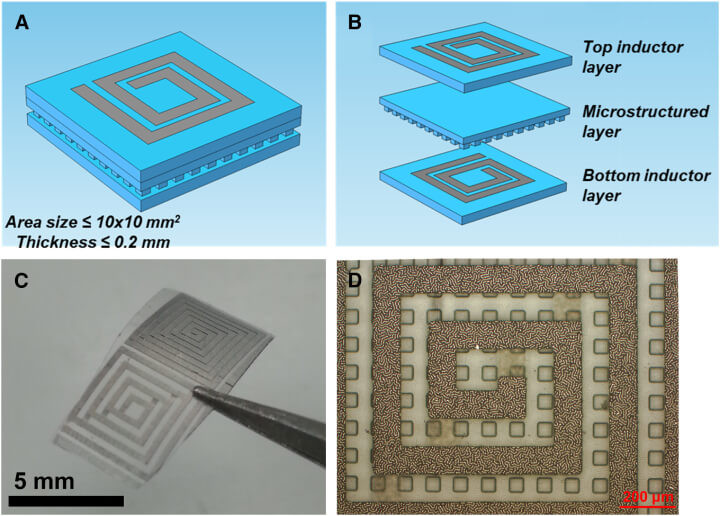Swallowable Sensors Enhance Gut Health Monitoring
11-04-2024 | By Robin Mitchell

Key Things to Know:
- Innovative Ingestible Sensor: Researchers have developed a new ingestible capsule equipped with microfabricated, flexible, wireless pressure sensors that provide detailed insights into gastrointestinal motility, surpassing traditional diagnostic methods.
- Enhanced Diagnostic Capabilities: The capsule measures both contractile movements and intraluminal pressures within the digestive tract, offering a comprehensive view of gastrointestinal health and aiding in the diagnosis of motility disorders.
- Non-Invasive Monitoring: Unlike invasive procedures, this capsule allows for real-time, continuous monitoring of the GI tract, improving patient comfort and safety while providing accurate data for better healthcare outcomes.
- Cost-Effective and Scalable: Leveraging semiconductor manufacturing processes, the sensors are produced at scale, making the technology affordable and accessible for widespread use in clinical settings.
Looking inside the body can be extremely challenging, with numerous factors to consider, including biocompatibility, strong digestive juices, and constant movement. While 3D scans can be made, they are rarely able to provide real-time images of organ internals, and invasive methods for observing digestive health have numerous implications. Recognising the challenges faced with this, researchers have recently created a fully ingestible sensor that they say could provide vital information on gut movement. What challenges do internal examinations on the human digestive system introduce, what did the researchers develop, and how could it transform health check-ups in the future?
What challenges do internal examinations of the human digestive system introduce?
For the vast majority of people, having an examination by doctors is anything but fun. Whether it’s the use of needles to extract blood, pressurised cuffs to measure blood pressure, or sticking a camera up one’s nose to see the back of the throat, most medical experiences are generally unpleasant.
However, for times when doctors need to see the internals of the human body, such procedures are not only risky but can also be too difficult to do. For example, the use of ultrasound to look at tissue is only effective for short depths, while CT scans utilise dangerous levels of radiation (compared to typical X-rays). Even though CT scans can produce excellent images, they cannot be used for real-time imagery, thus restricting what kind of data doctors can obtain.
Operating on the body to see organs is another option, but this is immensely invasive and opens up patients to a whole range of risks. Not only do such procedures cause permanent injuries to skin and tissue, but they can also risk secondary infection.
Another option is to use ingestible devices, such as sensors connected to batteries, but while these have existed for some time, they are not without their faults. One such issue that these devices face is that they need to be sufficiently cheap, as they must be discarded after use.
But such devices are also required to carry all the electronics and power, which, if damaged, must not trigger an immune response from the body. This limits to what storage technologies these devices can use, and sadly, most biocompatible technologies are extremely low in energy density.
Researchers develop new ingestible gut sensor
In the field of medical technology, the development of ingestible sensors has been a significant focus for researchers. These sensors provide a non-invasive method of monitoring internal bodily functions, offering valuable insights into various health conditions. The recent creation of an ingestible capsule by a team of researchers from Heriot-Watt University and the University of Birmingham, in collaboration with colleagues from the University of Edinburgh, marks a new advancement in the field of gastrointestinal health monitoring.
This capsule, developed through collaborative efforts between Heriot-Watt University and the University of Birmingham, represents a breakthrough in medical technology. It utilises an array of microfabricated, flexible, wireless pressure sensors that can capture detailed information on gastrointestinal motility. These sensors measure both the contractile movements and the intraluminal pressures within the digestive tract, offering a comprehensive view of gastrointestinal health that goes beyond the capabilities of traditional diagnostic tools.
Advanced Sensor Technology in Gastrointestinal Monitoring
The newly developed ingestible capsule is equipped with sensors that can detect pressure in a patient's digestive tract, providing crucial information about gut movement. Unlike traditional methods that rely on endoscopy or capsule endoscopies for visual inspection, this innovative system goes beyond imaging to analyse the contraction, relaxation, and pressure exerted in the intestines. By detecting areas of inactivity or abnormal function, the capsule offers a comprehensive understanding of the patient's gastrointestinal health.
The innovative design of the capsule allows for real-time, continuous monitoring of the GI tract, a significant improvement over intermittent or snapshot views provided by current endoscopic technologies. This continuous monitoring capability is crucial for accurately diagnosing and managing motility disorders, potentially leading to more effective treatment strategies and improved patient outcomes.
The ingestible capsule, measuring 3 cm in length and 1 cm in diameter, contains up to five thin sensors, each as thin as one or two human hairs. These pressure sensors are strategically placed to monitor movement and activity along the entire gastrointestinal tract, identifying regions of normal function, abnormal movement, or areas with no gut activity. The system's resilience and flexibility ensure continuous operation, even in the event of damage, prioritising patient safety and comfort.
Figure 1: Detailed Schematic and Photographic Overview of Flexible LC Sensors
To better understand the sophisticated technology behind these sensors, Figure 1 provides a detailed view of the schematic diagrams and photographs illustrating the flexible LC sensors' design and structure. This visual representation highlights the intricate engineering that enables precise monitoring of gastrointestinal pressures, showcasing the innovative approach to sensor design.
 (A) An isometric schematic image of the flexible pressure sensor is provided to illustrate its overall design. (B) A magnified view of the sensor reveals the top inductor layer, a microstructured intermediate layer with frustra, and the bottom inductor layer, detailing the complex layering. (C) The image shows the fabricated flexible pressure sensor, highlighting its practical implementation. (D) A closer look at the wrinkled metallic thin film inductor tracks is shown, emphasising the detailed craftsmanship involved.
(A) An isometric schematic image of the flexible pressure sensor is provided to illustrate its overall design. (B) A magnified view of the sensor reveals the top inductor layer, a microstructured intermediate layer with frustra, and the bottom inductor layer, detailing the complex layering. (C) The image shows the fabricated flexible pressure sensor, highlighting its practical implementation. (D) A closer look at the wrinkled metallic thin film inductor tracks is shown, emphasising the detailed craftsmanship involved.
Additionally, the sensor's ability to function effectively despite potential damage highlights the robustness of the design. This resilience ensures that the capsule can navigate the complex environment of the gastrointestinal tract without losing functionality, providing reliable data throughout its journey. This feature is particularly important in ensuring that the device can be safely used in a clinical setting, further enhancing its applicability and utility in healthcare.
One of the key considerations in the development of this ingestible capsule is its affordability and sustainability. The researchers have leveraged semiconductor manufacturing processes, similar to those used for microchips, to produce the sensors at scale. This cost-effective approach enables the mass production of sensors, making them accessible for widespread use in healthcare settings. By focusing on sustainability and affordability, the team aims to ensure that the technology can be readily adopted by healthcare providers like the NHS, enhancing patient care and diagnostic capabilities.
Future implications and commercialisation of the sensor
The development of the ingestible capsule equipped with sensors that can detect gut movement presents a significant advancement in gastrointestinal health monitoring. As the research team from Heriot-Watt University and the University of Birmingham, in collaboration with colleagues from the University of Edinburgh, continues to refine this innovative technology, the future implications and commercialisation of the system are promising.
With a pending patent and plans to establish a spinout company, the research team is dedicated to advancing the technology and bringing it to market. The ingestible capsule's resilience, flexibility, and non-invasive nature make it a promising tool for gastrointestinal health monitoring. While further clinical testing is required before the system can be widely available, the team's efforts to commercialise the technology demonstrate a commitment to improving patient outcomes and healthcare practices.
The ingestible capsule system developed by the collaborative research team represents a significant step forward in gastrointestinal health monitoring. By combining advanced sensors, cost-effective manufacturing processes, and a focus on patient well-being, this innovative technology has the potential to transform how gastrointestinal diseases and conditions are detected and diagnosed. As the research progresses and the system moves closer to commercialisation, it holds promise for enhancing diagnostic capabilities and improving patient care in the field of gastrointestinal health monitoring.

